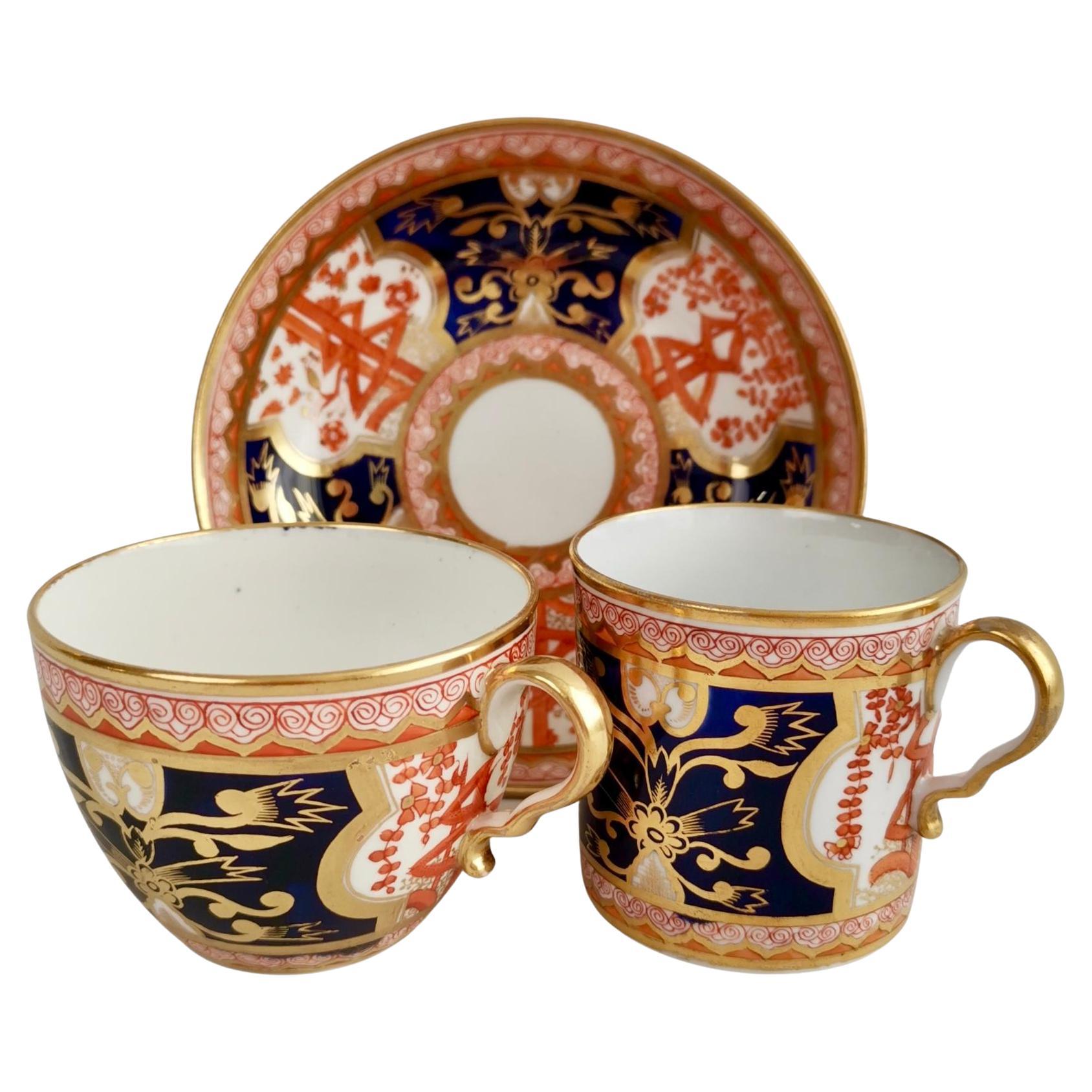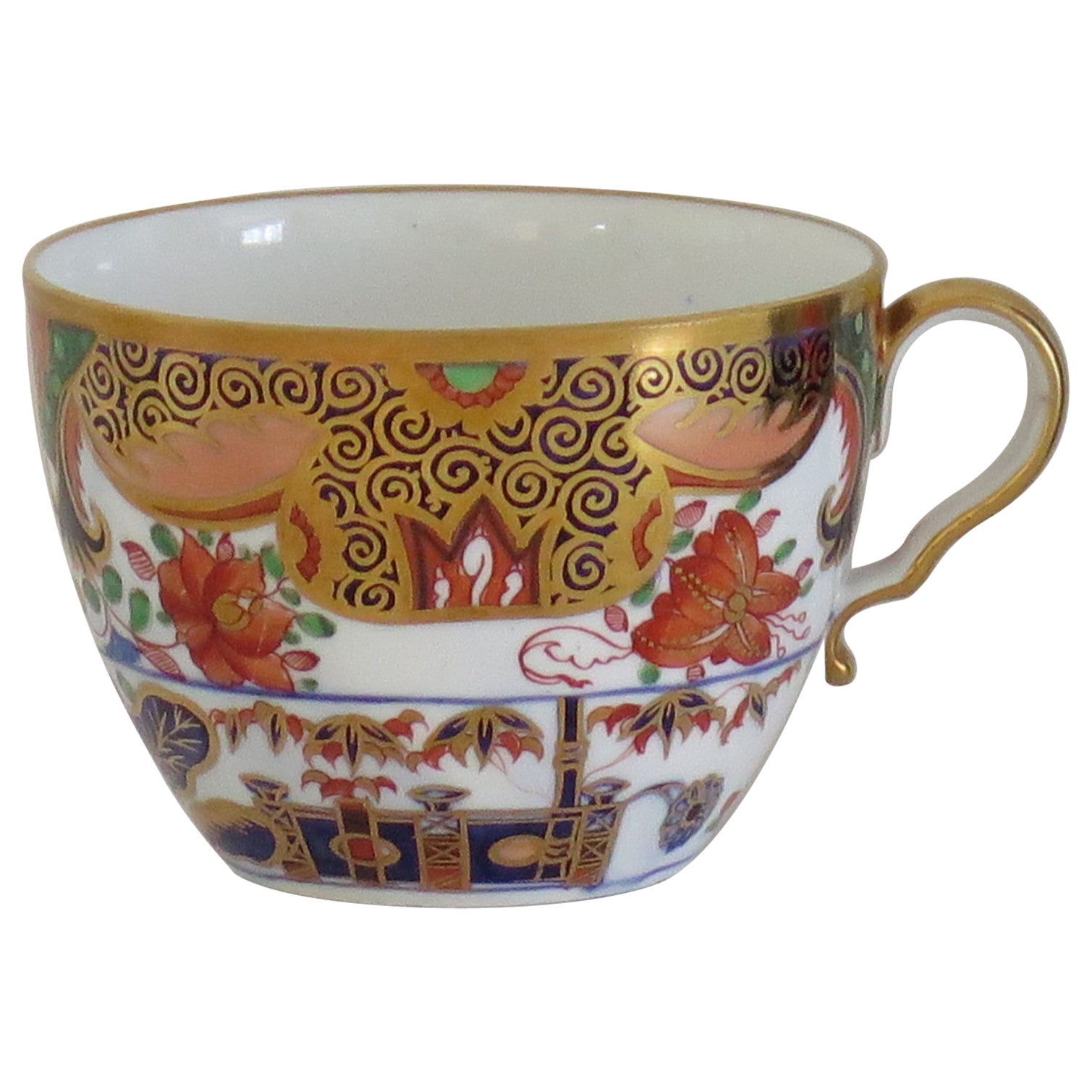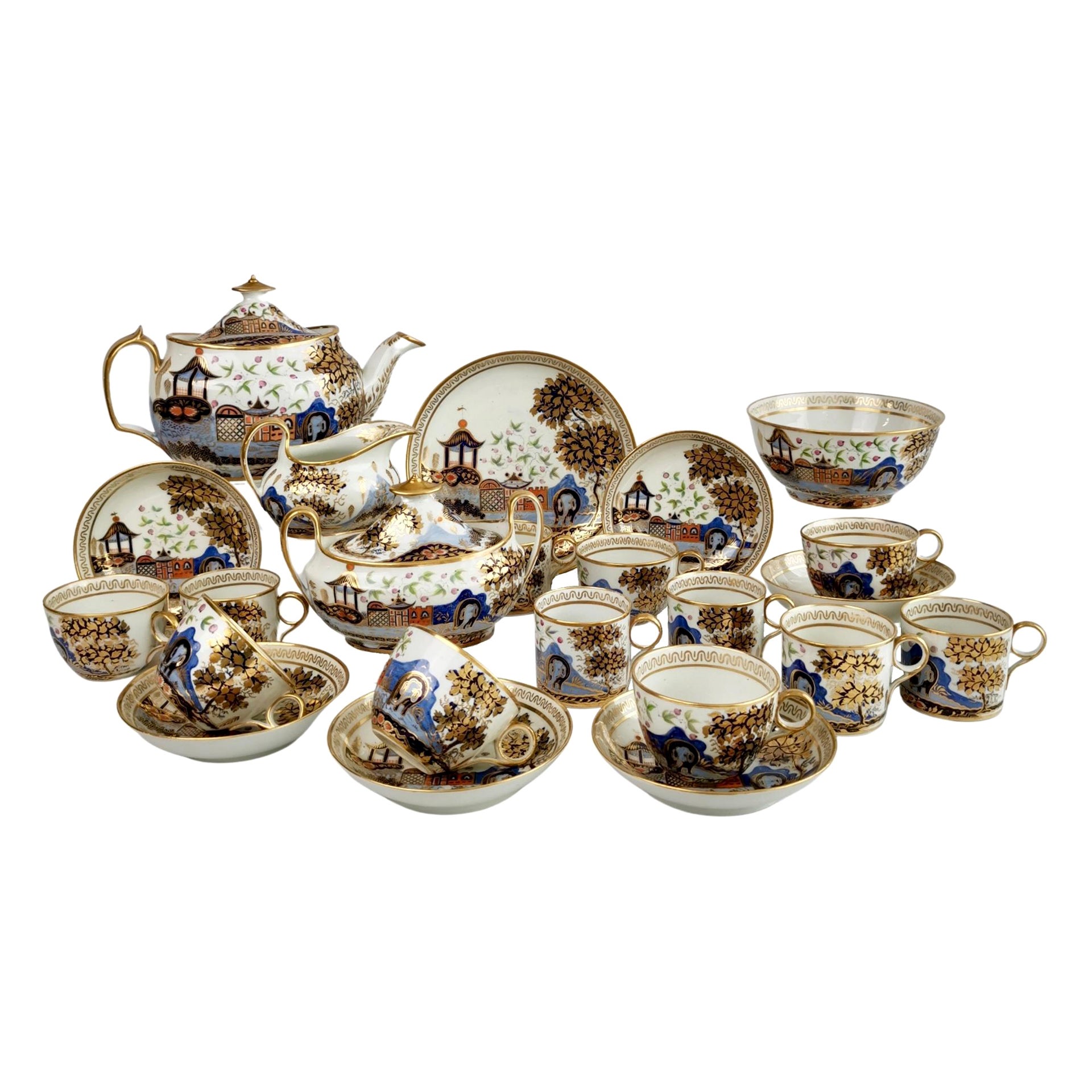Spode Porcelain Tea Service, Imari Tobacco Leaf Pattern 967, Georgian ca 1810
About the Item
- Creator:Spode (Maker)
- Dimensions:Height: 1 in (2.54 cm)Width: 1 in (2.54 cm)Depth: 1 in (2.54 cm)
- Sold As:Set of 16
- Style:Regency (Of the Period)
- Materials and Techniques:
- Place of Origin:
- Period:
- Date of Manufacture:circa 1810
- Condition:Wear consistent with age and use. In generally excellent condition; milk jug has repaired handle, three small cracks in teapot but it does not leak and is good for use, inside of sucrier discouloured and crazed.
- Seller Location:London, GB
- Reference Number:
Spode
Spode is one of the oldest and most distinguished of the great pottery companies of Staffordshire, the time-honored home of English ceramics. The firm’s blue and white bone china transferware is a timeless classic. Spode dishes compose the sort of elegant dinner service that most of us envision on a traditional holiday table.
The company was established in 1770 in Stoke-on-Trent by Josiah Spode, a friend and neighbor of another estimable English ceramist, Josiah Wedgwood. Spode was particularly known for two technical achievements in the firm’s early decades. The first was to develop a standard formula for the making of bone china — a type of porcelain (made with a mixture of bone ash, minerals and clay) that is dazzlingly white and so strong it can be used to create very thin translucent plates and vessels. The other was to perfect the making of transferware. That process involves the transfer of pictorial images inked on tissue paper — such as the garden scenery in the famous Willow dish patterns — onto ceramics that are then sealed with a glaze. In 1833, following the sudden death of Josiah Spode III, business partner W.T. Copeland took over the company and changed its name. Collectors regard Copeland-marked pieces as Spode china. The Spode brand was revived in 1970.
From the 1820s onward, Spode enjoyed tremendous success both in Britain and elsewhere owing to the beauty and vitality of its decorative imagery. By some counts, Spode created more than 40,000 patterns in the 19th century. Many favorite Spode patterns — among them Blue Italian, India Tree, Greek and Woodland — date to the company’s early years. Spode’s most popular pattern, Christmas Tree, was introduced in 1938. Prices for Spode china vary widely, based on the size of the service, its condition and the pattern. An antique dinner service for 12 people or more, in good repair and complete with cups and serving dishes, will generally cost between $10,000 and $20,000. Such Spode services become heirlooms — a proud and timeless addition to a family’s table. And as you will see on these pages, Spode’s rich and varied wares offer a visual feast in and of themselves.
- ShippingRetrieving quote...Ships From: London, United Kingdom
- Return PolicyA return for this item may be initiated within 14 days of delivery.
- Spode Porcelain Teacup, Imari Tobacco Leaf Pattern 967, Regency ca 1810By SpodeLocated in London, GBThis is a beautiful teacup and saucer made by Spode in about 1810. The set is decorated with the famous Imari Tobacco Leaf pattern 967, which was first introduced by Spode in 1806. ...Category
Antique 1810s English Regency Porcelain
MaterialsPorcelain
- Spode Porcelain Teacup Trio, Red Imari Dollar Pattern, Regency, ca 1810By SpodeLocated in London, GBThis is a beautiful orphaned teacup made by Spode in about 1810. It bears a beautiful Japanese-inspired Imari pattern. Spode was the great pioneer among the Georgian potters in England. Around the year 1800 he perfected the bone china recipe that has been used by British potters ever since, and he was also the leading potter behind the technique of transferware, making it possible for English potters to replace the Chinese export china, which had come to an end around that time, with their own designs. This was fundamental to a thriving industry that would last for about 150 years and provide half the world with their tableware. Spode porcelain is regarded as one of the highest quality porcelains around; for a soft-paste porcelain it is surprisingly hard and fine, and has a wonderful bright white colour. The pattern on this can is called "Dollar" pattern, a very famous pattern that was used by English potters in the 18th and early 19th Century. It is obvious why it is called “dollar” - but its origin is less obvious! It is thought that this pattern was derived from a very old Chinese pattern depicting a tree with elaborate foliage that hides a Chinese character representing longevity or happiness. Traditionally, this went with a an image called “Taotie”, which was used on very ancient bronze vases...Category
Antique Early 1800s English Regency Porcelain
MaterialsPorcelain
- New Hall Tea Service for Six, Elephant Pattern 876, Regency ca 1810By New HallLocated in London, GBThis is spectacular full tea service for six made by New Hall around the year 1810. The service consists of a teapot with cover, a sucrier with cover, a milk jug, six trios each consisting of a teacup, a coffee can and a saucer, a cake plate (saucer dish) and a slop bowl. The set is decorated in the super-charming and popular but very rare Elephant pattern...Category
Antique 1810s English Regency Tea Sets
MaterialsPorcelain
- Spode Teacup and Saucer, Red, Gilt with White Chrysanthemum, Regency ca 1810By SpodeLocated in London, GBThis is a beautiful teacup and saucer made by Spode around 1810. The set is shaped in the "bute" shape and decorated with a bright Neoclassical pattern of a warm red ground with gilt...Category
Antique 1810s English Regency Porcelain
MaterialsPorcelain
- Spode Orphaned Porcelain Saucer, Chinoiserie Gilt Potted Flowers, Regency ca1820By SpodeLocated in London, GBThis is a beautiful deep orphaned saucer made by Spode around 1820. The saucer is decorated with a gorgeous Chinoiserie pattern of a group of potted flowers in gilt and grey. The sau...Category
Antique 1820s English Regency Porcelain
MaterialsPorcelain
- Derby Porcelain Tea Service, Artichoke Pattern in Turquoise, ca 1785By DerbyLocated in London, GBThis is a beautiful and extremely rare tea service made by Derby in about 1785. The set has the distinctive "artichoke" moulding and a bright turquoise ground with the white artichok...Category
Antique 1780s English George III Tea Sets
MaterialsPorcelain
- Spode Three Georgian Imari Pattern 967 Decorated Porcelain PlatesBy SpodeLocated in Bishop's Stortford, HertfordshireA very fine set of three Georgian Imari pattern decorated porcelain cabinet plates by Spode and dating from around 1810. The small side plates are of...Category
Antique 1810s English George III Porcelain
MaterialsPorcelain
- Spode Porcelain Tea Cup in Hand Painted & Gilded Pattern 967, circa 1810By SpodeLocated in Lincoln, LincolnshireThis is a fine example of an English George III period, porcelain Tea Cup, made by Spode and hand painted in Pattern 967, during the early 19th century, circa 1815. The cup has th...Category
Antique Early 19th Century English George III Ceramics
MaterialsPorcelain
- Antique Early 19th Century Spode Porcelain Pattern Number 2408 Tea Cup & SaucerBy SpodeLocated in Philadelphia, PAA fine antique Spode porcelain cup & saucer. Pattern no. 2408 Decorated throughout with a cobalt floral patttern and extensive gilding. Simply a great cup & saucer from Spod...Category
Antique Early 19th Century English Neoclassical Porcelain
MaterialsPorcelain
- Spode Porcelain Sucrier Hand Painted and Gilded Pattern 967, circa 1810By SpodeLocated in Lincoln, LincolnshireThis is a fine example of an English George III period, porcelain, Sucrier with cover or lidded sugar bowl, made by Spode all hand painted in Pattern 967, during the early 19th Century, circa 1810. This Sucrier has a beautiful and elegant shape with high loop handles either side of the oval body. The cover has a shaped oval knob...Category
Antique Early 19th Century English George III Ceramics
MaterialsPorcelain
- Georgian Spode Coffee Can Porcelain Floral Leaf Gilded Pattern, circa 1810By SpodeLocated in Lincoln, LincolnshireThis is a good quality porcelain coffee can that we attribute to Spode of Staffordshire, England, made during the very early 19th century, George 111rd period, circa 1810. The coffee can is nominally parallel, with a loop handle having one lower kink, characteristic of the Spode handle. It has a fairly deep foot recess with obtuse corners and is unmarked to the base. The pattern is one of Spode's transfer printed floral leaf designs in a burnt orange colour around the upper border, all between gold gilt rings with a further gold gilt ring just above the base and hand gilding to the outer handle. We date this piece to the late George third...Category
Antique Early 19th Century English George III Ceramics
MaterialsPorcelain
- Georgian Spode Coffee Can Porcelain Pattern 1928, circa 1810By SpodeLocated in Lincoln, LincolnshireThis is a very good quality porcelain coffee can by Spode of Staffordshire, England, made during the very early 19th century, George 111rd period, circa 1805. The coffee can is no...Category
Antique Early 19th Century English George III Ceramics
MaterialsPorcelain






